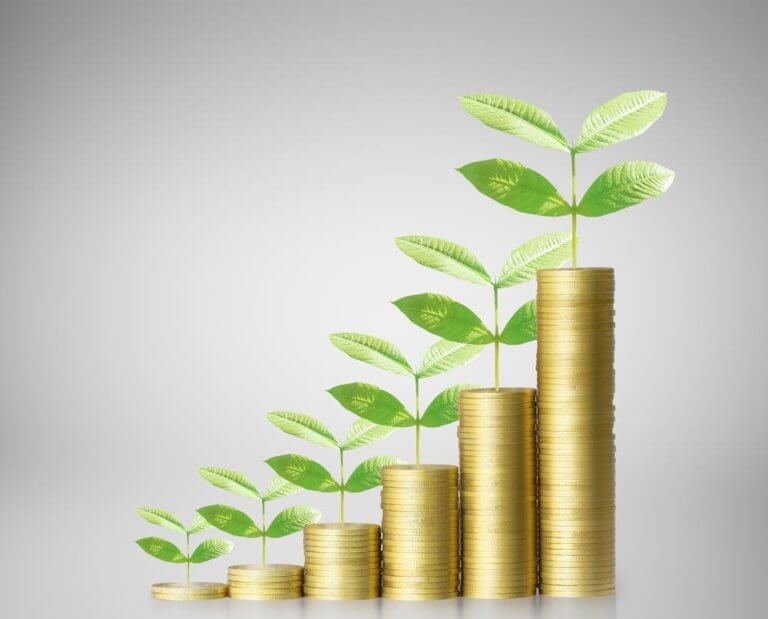However, the rise of ‘impact investing’ has gained significant momentum in recent years spurred on by an increase in investment managers with dedicated sustainable portfolios. Viable options are now available for all investors, regardless of affluence. Damien Lardoux, Portfolio Manager of five risk-adjusted impact investing model portfolios for EQ Investors (EQ), takes a closer look at this growing global phenomenon.
What is impact investing?
We all know that there are huge challenges facing the world; climate change, natural resource shortages and aging populations to name just a few. Investment is urgently needed to develop, scale up and market solutions that address these pressing global challenges.
Investing in companies that create social, environmental and economic value is a trend that has been increasing worldwide. This investment approach is commonly called impact investing and last year, JPMorgan estimated that the market was worth $60bn globally – and growing.
Socially responsible investing is not a recent phenomenon. Early initiatives were based on the exclusion of controversial sectors such as tobacco or armaments, rather than on investing in businesses which have the influence to do good. That’s what impact investing is seeking to achieve and it has begun to take off.
Screening investments
The Global Impact Investing Network (GIIN) is an organisation dedicated to increasing the scale and effectiveness of impact investing. Currently there are more than 340 investment products listed in the GIIN ImpactBase database. Each investment opportunity has to quantify its social and/or environmental performance in addition to the anticipated financial returns. There are several funds available that do not meet this criterion, but will still allow investors to potentially receive a financial return whilst also investing to have a positive impact on society and/or the environment.
Investments are evaluated using the following processes:
• Positive screening – aims to seek out and include companies or industries that are actively involved in creating/generating solutions to social and environmental issues. Examples include:
o Clean fuels
o Renewable energy
o Healthcare
o Recycling
o Sustainable agriculture
• Negative screening – aims to exclude harmful companies or industries, thereby avoiding certain social or environmental issues such as gambling or resource depletion. Examples include:
o Animal testing
o Armaments
o Gambling
o Ozone depleting chemicals
o Pornography
o Tobacco
Analysis also takes into account environmental social and governance (ESG) matters relevant to a company’s strategy and operations.
Challenges associated with impact investing
The rapid growth of impact investing has been countered by concerns about simultaneously achieving social impact and market-rate returns. A recent report published by Cambridge Associates found that impact investing can capitalise on long-term social or environmental trends to compete with, and at times outperform, traditional asset class strategies.
Socially responsible investing can actually be traced back several centuries. However, with sustainability firmly on the map for an increasing number of global companies, the opportunity of impact investing is now receiving well-deserved attention and scrutiny. Research studies are proliferating as the market seeks to understand the phenomenon, strengthening the market building process currently underway and further demonstrating the business case for investors.
The specialist investment managers, WHEB, have calculated that companies that fit their social investment themes (their investment ‘universe’) have a greater five year historical sales growth (to March 2015) and one year forecasted sales growth when compared to the MSCI World Index as detailed in the charts below. This shows that you can have a positive impact without compromising on the return or income received.
Is impact investing for everyone?
Impact investing can be a great way to add diversification to a standard portfolio. The positive impact approach leads to selecting companies that are generating solutions and run their business in a sustainable manner. Such companies avoid fines and other penalties; they have stronger relationships with their customers, suppliers and staff. Furthermore, they tend to operate in sectors with high growth potential.
In a survey undertaken by Tridos Bank in September 2014 it was found that 73% of investors with a net wealth of between £50,000 and £100,000 expressed an interest in social investments. In 2013 $36 billion was committed to impact Investing and this is expected to increase to $1 trillion by 2020.
Potential tax advantages of impact investing
In 2014, the UK Government became the first in the world to incentivise social investment through the personal tax system. Social Investment Tax Relief (SITR) allows individuals to deduct 30% of the sum invested from their income tax liability for the current or previous tax years. However, the investment must be held for a minimum of three years for the relief to be retained.
If investing any gains, the tax liability can be deferred until the investment is sold. The investment is also exempt from Capital Gains Tax (CGT), though income tax is still applicable on any dividends or interest payments received.
SITR-qualifying investments have been restricted by the current £290,000 limit on the amount that organisations can raise. The Government has applied to the European Union to increase the amount with a decision expected imminently.
How to become an impact investor?
Impact Investing is becoming more and more accessible to UK retail investors with close to 90 ethical and sustainable investment funds managing more than £13.5 billion of assets currently available.
At EQ Investors, as well as avoiding harmful industries and types of business our Positive Impact Portfolios continually seek to find funds which aim to make a positive contribution, alongside an attractive financial return. These are accessible online through investment platforms such as Novia with further additions due shortly. The Positive Impact Portfolios will also be available via ‘Simply EQ’, our soon to be launched simplified advice solution.
The next step
Analysis of past performance of the EQ Positive Performance Portfolios suggest that there is no correlation between impact and financial return – the adverse impact of negative screening seems to be compensated by the benefits of the positive impact investments. On that basis there is no reason to expect a positive impact approach to have an adverse reaction on performance. Impact investing is not only about selecting investments that do good, it is just as much about selecting good investments.























